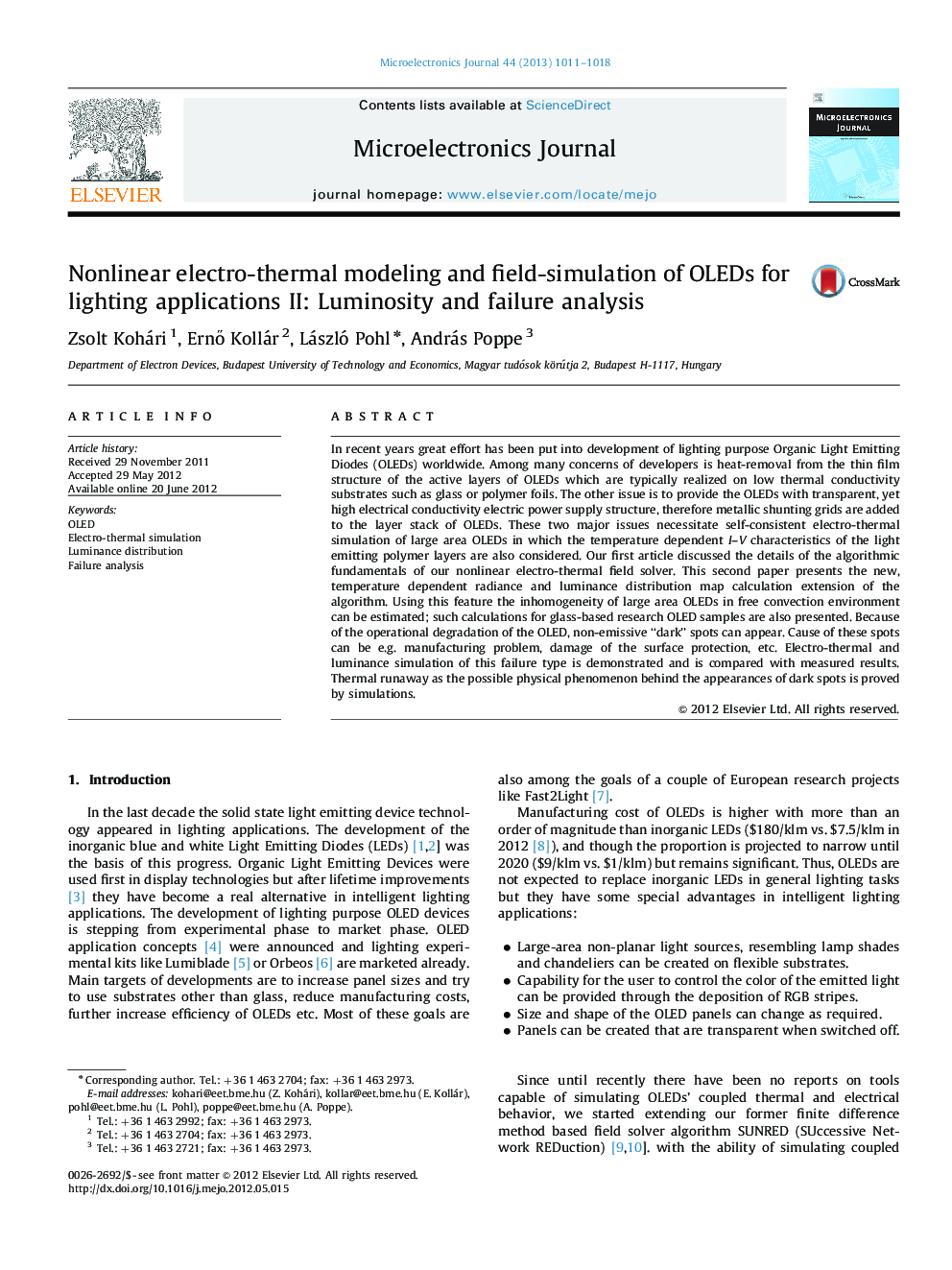| Article ID | Journal | Published Year | Pages | File Type |
|---|---|---|---|---|
| 541787 | Microelectronics Journal | 2013 | 8 Pages |
In recent years great effort has been put into development of lighting purpose Organic Light Emitting Diodes (OLEDs) worldwide. Among many concerns of developers is heat-removal from the thin film structure of the active layers of OLEDs which are typically realized on low thermal conductivity substrates such as glass or polymer foils. The other issue is to provide the OLEDs with transparent, yet high electrical conductivity electric power supply structure, therefore metallic shunting grids are added to the layer stack of OLEDs. These two major issues necessitate self-consistent electro-thermal simulation of large area OLEDs in which the temperature dependent I–V characteristics of the light emitting polymer layers are also considered. Our first article discussed the details of the algorithmic fundamentals of our nonlinear electro-thermal field solver. This second paper presents the new, temperature dependent radiance and luminance distribution map calculation extension of the algorithm. Using this feature the inhomogeneity of large area OLEDs in free convection environment can be estimated; such calculations for glass-based research OLED samples are also presented. Because of the operational degradation of the OLED, non-emissive “dark” spots can appear. Cause of these spots can be e.g. manufacturing problem, damage of the surface protection, etc. Electro-thermal and luminance simulation of this failure type is demonstrated and is compared with measured results. Thermal runaway as the possible physical phenomenon behind the appearances of dark spots is proved by simulations.
► Radiance and luminance characteristic equations of OLEDs are presented. ► Luminosity characteristics are applied in FDM based electro-thermal field solver. ► OLEDs in free convection environment are simulated by using CFD simulation results. ► Non-emissive dark spot failure of OLEDs is modeled and simulated. ► Thermal runaway is identified as the cause of dark spot failures.
